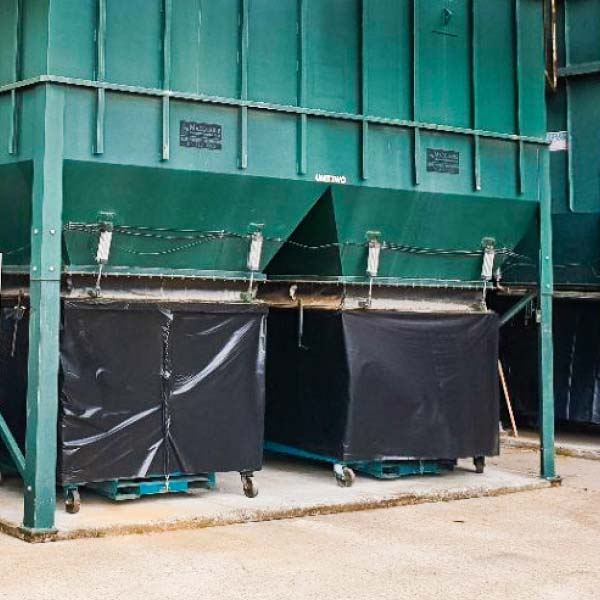In recent years, there has been a growing shift towards paper bags as an eco-friendly alternative to plastic. This has been driven by increasing environmental concerns and the desire to reduce plastic waste that harms ecosystems, wildlife, and even human health. However, while switching to paper bags may seem like the perfect solution, it’s important to take a closer look at the full environmental impact of both paper and plastic bags before jumping to conclusions.
The Environmental Impact of Paper Bags
1. Higher Carbon Footprint: Producing paper bags requires more energy and water than plastic bags. Studies suggest that paper bag production generates 70% more air pollution and 50 times more water pollution than plastic.
2. Deforestation Concerns: Paper comes from trees, meaning increased demand can contribute to deforestation if not sourced sustainably. At the same time, many paper products are made from recycled materials or responsibly managed forests; not all paper bags meet these standards.
3. Weight & Transport Impact: Paper bags are heavier and bulkier than plastic, requiring more fuel to transport, increasing their carbon footprint.
4. Reusability Issues: Plastic bags can often be reused multiple times (for storage, trash liners, etc.), whereas paper bags tear easily and have a shorter lifespan.
The Case for Plastic Bags
Plastic bags have long been criticised for their environmental impact:
- Non-Biodegradable: Plastic can take hundreds of years to break down, lingering in landfills and oceans.
- Pollution & Wildlife Harm: Millions of plastic bags end up in waterways, where they threaten marine life.
- Microplastics: Over time, plastic breaks into tiny particles that contaminate soil and water.
Because of these issues, many countries and cities have banned or taxed single-use plastic bags, pushing consumers toward alternatives like paper. In Australia, major supermarkets Coles and Woolworths phased out single-use plastic bags in 2018, leading to an 80% reduction in plastic bag consumption nationwide. Several states, including South Australia, Queensland, and Western Australia, have also implemented strict bans on lightweight plastic bags, encouraging the use of reusable or paper alternatives.
The True Environmental Cost: Usage and Reusability
One of the most important factors to consider when comparing paper and plastic bags is how they are used. If both types of bags are only used once and then discarded, they can both contribute significantly to environmental problems. However, if the bags are reused, the environmental cost decreases drastically.
- Paper bags are more likely to be reused as shopping bags or for storage. However, their higher environmental cost during production means that they need to be reused several times to offset their initial impact.
- Plastic bags, on the other hand, can be reused more easily. Many people use them for a variety of purposes beyond shopping—such as for rubbish bin liners, storage, or transporting items—so their impact can be minimised if they are used multiple times.
The Verdict: Is One Better Than the Other?
The simple answer is that neither paper nor plastic bags are perfect solutions for the environment. The key to reducing environmental impact lies in the following factors:
- Reduce Usage: The most effective way to mitigate the impact of both paper and plastic bags is to reduce consumption altogether. Using reusable bags, whether fabric or durable plastic, can significantly lower the demand for single-use bags.
- Reuse: Both paper and plastic bags can be reused multiple times before being discarded. The longer a bag is used, the lower its environmental impact becomes.
- Recycling: Recycling paper and plastic bags is important, but unfortunately, many people do not take the time to recycle these items properly. Increasing recycling rates for both materials can help mitigate their environmental footprint.
- Sustainable Materials: For paper bags, choosing those made from recycled content or those certified by credible environmental standards (such as FSC) can help reduce their environmental impact.
From Use to Reuse: The Smarter Path to Sustainability
While switching from plastic to paper may seem like a solution to environmental issues, it’s important to consider the full lifecycle of the bags. Paper bags, when produced sustainably, can have a lower environmental impact than plastic bags, but only if they are reused multiple times. The best solution for the environment is not simply replacing one with the other, but rather using less, reusing more, and recycling responsibly.
At UPAC, we’re committed to providing sustainable packaging solutions that help businesses reduce their environmental footprint while still meeting their functional needs. By offering a range of eco-friendly packaging options, we aim to strike a balance between convenience and sustainability, ensuring that every decision we make helps build a better future for the planet.
Let’s work together towards a cleaner, greener tomorrow—one sustainable packaging choice at a time.






